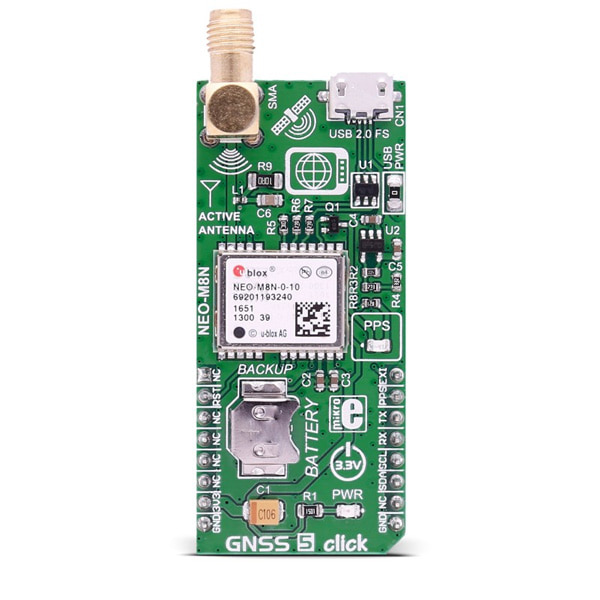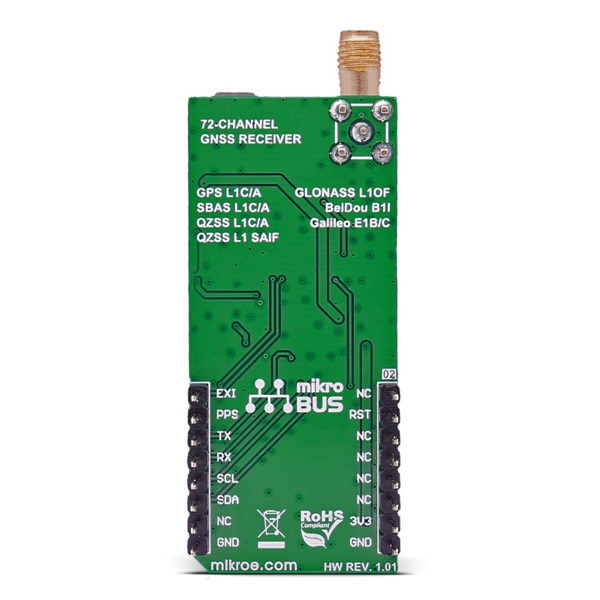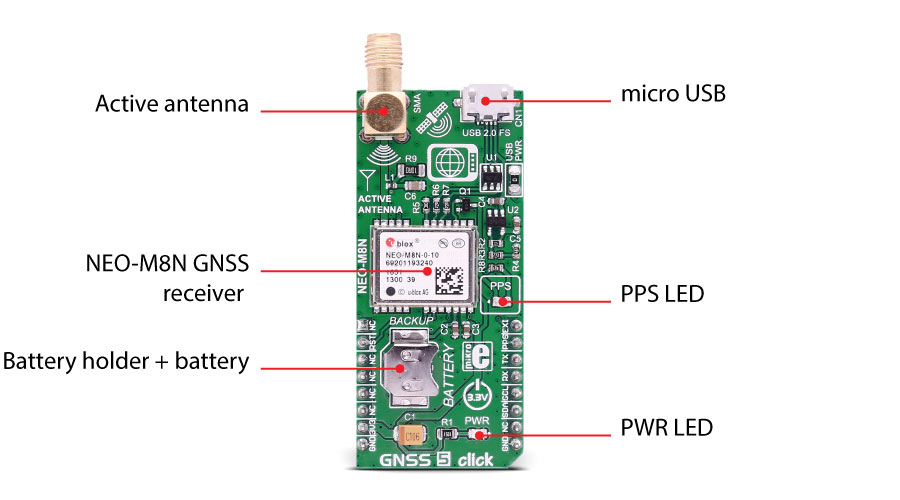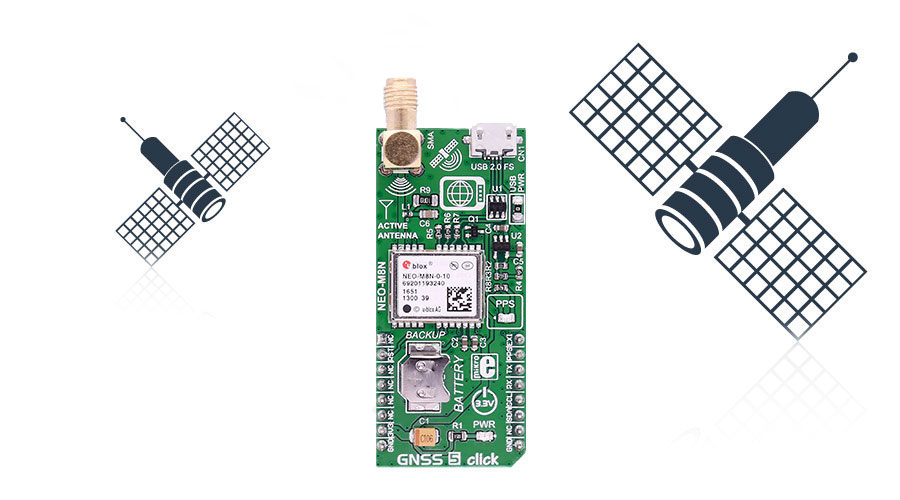uBlox NEO-M8N GNSS 모듈
(GNSS 5 click)


개요
- 본 제품은 uBlox사의 NEO-M8N GNSS 리시버 모듈입니다.
- GPS 위치 정보를 수신이 가능하며 3.3V로 동작합니다.
- MCU와는 I2C 혹은 UART로 통신합니다.
- USB 포트가 장착되어 있어 PC에서 UART대신 통신이 가능하며, 모듈에 전원을 공급합니다.
-

특징
-
NEO-M8N GNSS receiver module features
The NEO-M8 series of concurrent GNSS modules are built on the high performing u-blox M8 GNSS engine in the industry proven NEO form factor.
The NEO-M8 series utilizes concurrent reception of up to three GNSS systems (GPS/Galileo together with BeiDou or GLONASS), recognizes multiple constellations simultaneously and provides outstanding positioning accuracy in scenarios where urban canyon or weak signals are involved.
The u-blox NEO-M8 modules can also benefit from the u-blox AssistNow assistance service. The Online service provides GNNS broadcast parameters, e.g. ephemeris, almanac plus time or rough position to reduce the receiver's time to first fix significantly and improve acquisition sensitivity.
Hardware Backup Mode - If the main supply voltage fails, and a battery is connected to V_BCKP, parts of the receiver switch off, but the RTC still runs providing a timing reference for the receiver. This operating mode enables all relevant data to be saved in the backup RAM to allow a hot or warm start later.What is GNSS?
GNSS stands for Global Navigation Satellite System, an umbrella term that describes both the United States GPS, the Russian GLONASS global positioning systems, and European Galileo.
How it works
A constellation of satellites sends a continuous signal towards Earth. Onboard every satellite is an atomic clock, and all of them are synchronized, thanks to a reference time scale defined by the whole system. So, that the signals coming from the different satellites of the same constellation share the same reference time scale.

If the user wants to utilize GNSS to determine a position, they must have an antenna that receives the signals coming from the satellites, and a receiver that translates these signals. The antenna position will be deduced from the measurements of the time delay between the emission time (satellite) and the reception time (receiver) for at least 4 signals coming from different satellites.
Specifications
Type GPS/GNSS Applications Asset tracking, for navigation devices based on GPS and GLONASS, road navigation devices, public transport, wearable devices, etc. On-board modules NEO-M8N GNSS receiver module from u-blox Key Features –167 dBm navigation sensitivity, supports all satellite augmentation systems, battery holder Interface I2C,UART Input Voltage 3.3V Click board size L (57.15 x 25.4 mm) Pinout diagram
This table shows how the pinout on GNSS 5 click corresponds to the pinout on the mikroBUS™ socket (the latter shown in the two middle columns).
Buttons and LEDs
Designator Name Type Description LD1 PWR LED Power Indication LED LD2 PPS LED Pulse Per Second (by default) when the GNSS receiver has established a connection with the satellite constellation the LED starts blinking
문서
연관제품
- 연관제품 1
